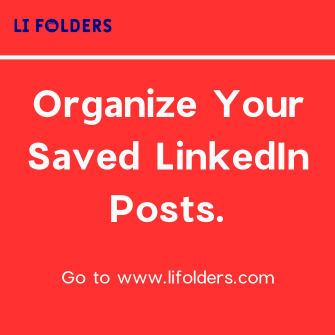You can't directly tell if someone has read your LinkedIn message, as the platform doesn't offer a specific feature like read receipts. However, you can observe indicators such as responses, or check if there's an increase in profile views after you've sent a message. These signs can suggest that your message was noticed and read. It's also important to manage your expectations, as not all users keep their notification settings adjusted to show read status. Keep your focus on crafting engaging messages rather than tracking their reception; exploring these methods may lead you to more effective ways to connect and gauge engagement.
Understanding LinkedIn Read Receipts
LinkedIn's read receipts feature lets you know when someone has seen your message. This simple notification can be a game-changer, especially when you're trying to forge new connections or nurture existing relationships in your professional community. It's like a nod across the room, acknowledging you've reached out, and it sets the stage for further interaction.
When you're navigating the vast world of LinkedIn, knowing that your message has been seen helps you feel less like you're just shouting into the void and more like you're part of an active, engaging network. It's comforting, isn't it? You're not alone in this digital networking space; there are real people on the other side of those messages.
Furthermore, this feature can subtly guide your communication strategy. If your message has been seen but not responded to, you might decide to follow up or reevaluate your approach, making your networking efforts more targeted and efficient. Remember, every interaction on LinkedIn is a step toward building meaningful professional relationships. So, take advantage of this feature to stay connected and make your presence felt within your industry.
How Read Receipts Work
Now that you understand the importance of read receipts on LinkedIn, let's explore how they actually operate. When you send a message on LinkedIn, you're not just reaching out; you're inviting someone into your professional circle. Read receipts in this context function as a subtle nod or acknowledgment from the recipient.
Once you send a message, LinkedIn monitors and records when it's opened by the recipient. This action triggers the system to mark the message as "read." You'll see a small icon or notice next to the message, indicating that your contact has seen your message but hasn't necessarily responded yet. It's like knowing someone has received your invitation and peeked inside the envelope.
This feature taps into our need to feel acknowledged and connected in our professional interactions. It reassures you that your message hasn't just disappeared into the digital ether. Instead, it's reached someone's eyes, making you feel a part of a larger, interconnected community of professionals. While this waiting might stir some anxiety about the response, it also fortifies the sense of being actively engaged in a professional dialogue, even in the silent moments of waiting.
Enabling Read Receipts Feature
To enable read receipts on LinkedIn, you'll need to adjust your messaging settings. This simple change lets you see when your messages are not only delivered but also read, helping you feel more connected to your network. It's like knowing someone's received your invitation and is walking over to join the conversation.
Here's how you can turn this feature on: First, click on your profile picture at the top of your LinkedIn homepage to open the dropdown menu. From there, select “Settings & Privacy.” Next, navigate to the “Communications” section and click on “Messaging experience.” You'll find the “Read receipts and typing indicators” option. By toggling this setting on, you're opting in to both send and receive read receipts.
Privacy Settings and Implications
Understanding the privacy settings on LinkedIn is crucial as they determine what information you share and who can see when you've read a message. You're part of a community here, and knowing how to manage these settings helps you maintain your desired level of privacy while still being an active member.
When you adjust your privacy settings to manage read receipts, you're controlling your visibility. It's about finding a balance that suits your professional needs and personal comfort. You might prefer to keep your activity private to feel more secure in your interactions, or you may choose to be more open to foster connections and show engagement.
Remember, these settings aren't just about protecting your information; they're also about respecting the privacy of others in your network. By customizing your preferences, you ensure that you're interacting on LinkedIn in a way that respects both your boundaries and those of your connections.
It's all about making LinkedIn work for you and the community you're building. Tailoring your privacy settings helps you be part of this professional network on your terms, enhancing both your experience and that of your peers. Take control, stay comfortable, and keep connecting!
Limitations of Read Receipts
While adjusting your privacy settings on LinkedIn helps manage who sees your activity, it's important to recognize the limitations of read receipts. You'll want to understand that just because you can see whether someone has read your message, it doesn't always tell the whole story.
First off, if someone's turned off their read receipts, you're out of luck. You won't get that comforting blue checkmark, and you'll be left guessing if they've seen your note. It's like throwing a message in a bottle into the sea—you hope it reaches the shore, but you can't be sure.
Even when read receipts are active, they don't indicate if the recipient actually engaged with your message or simply glanced at it while scrolling through a mountain of notifications. They might have read your message in a rush and planned to return to it later, only to forget.
Strategic Messaging Tips
Crafting your LinkedIn messages with precision can significantly increase the chances of getting a response. When you're reaching out, it's crucial to make every word count. Start by personalizing your message. Use the recipient's name and reference specific details you've learned about them from their profile or shared connections. This shows you're genuinely interested and not just sending bulk messages.
Keep your tone friendly yet professional. You're aiming to build a connection, so let your personality shine through without being overly casual. Ask a thoughtful question related to their field or a recent achievement they've shared. This not only shows that you're informed but also opens the door for a meaningful exchange.
Be concise. People are busy, and a long-winded message might get skimmed or skipped entirely. Aim for a few well-crafted sentences that get straight to the point. You want to respect their time while still being engaging.
Lastly, end with a clear call to action. Whether it's a request for a phone call, a meeting, or a simple reply, let them know exactly what you're hoping for next. This clarity helps forge a connection and increases the likelihood they'll engage with you.
Alternatives to Gauge Engagement

If you can't tell whether someone has read your LinkedIn message, consider these alternative methods to gauge their engagement. Firstly, you can look at their activity on LinkedIn. If they're actively posting, commenting, or sharing content, it's a good sign they're engaging with the platform regularly. This can give you a clue about their responsiveness.
Another approach is to observe the interactions on your own posts. If the person you messaged likes or comments on your updates, it's a subtle hint that they're aware of you and your content, which can foster a sense of connection. This mutual interaction can create a community feel, drawing you closer within the professional network.
You might also consider the timing of your messages. Sending a message when your recipient is likely online increases the chance of getting a quicker response. You can infer their active hours based on their past activity patterns.
Lastly, don't overlook the power of common connections. Reach out to mutual contacts who can provide insights or perhaps facilitate an introduction, strengthening your network and enhancing your sense of belonging in your professional community. These strategies can help you feel more connected and informed, even without direct confirmation of message receipt.
Improving Message Open Rates
To boost your message open rates on LinkedIn, ensure your subject line is clear, compelling, and personalized. Remember, you're not just reaching out; you're inviting someone into your professional circle. Make them feel that they're specifically chosen and that your message holds unique value for them.
Timing is also crucial. Try sending your messages when your recipient is likely to be online—perhaps during early mornings or lunch breaks when people typically check their updates. This makes it more likely that your message will be at the top of their inbox.
Additionally, keep your message succinct but warm. A brief, friendly note with a clear purpose resonates better than a long, impersonal one. It's like saying, "I value your time and believe you're important."
Lastly, don't forget to follow up. If you haven't heard back in a week or so, a gentle reminder can show that you're genuinely interested in connecting, not just reaching out as a one-off. It's about building a relationship, not just making a contact. This approach not only increases your chances of getting a response but also fosters a sense of community and belonging, which is crucial in today's professional world.
Conclusion
So, you've mastered LinkedIn's read receipts and explored strategic messaging. Remember, while enabling read receipts gives you insight, it's not foolproof. Always prioritize crafting engaging messages to boost your open rates. If you're unsure about engagement, look beyond read receipts—analyze replies and profile interactions. Stay adaptable, refine your approach, and keep your communications professional yet captivating. This way, you'll not only know if your message was seen but also increase the chances of a favorable response.






